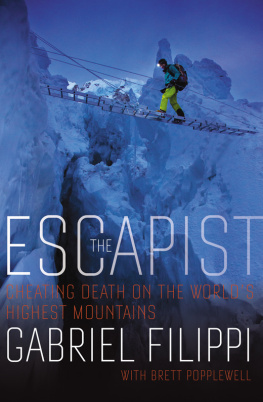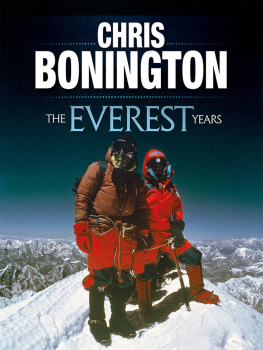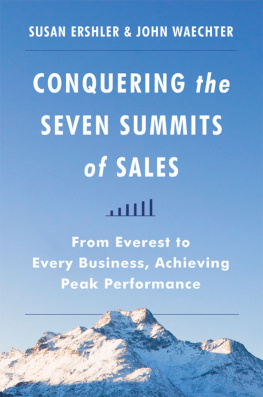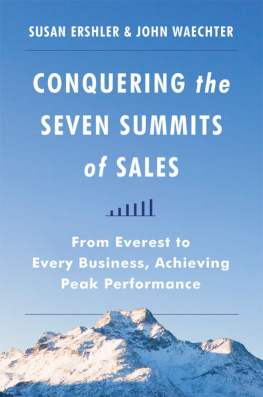AFTER A LONG CAREER as a General Contractor, Chris now serves as president of the Dishman Hills Conservancy board in Eastern Washington and spends his time working to conserve the area that helped spark his love of climbing. He lives in Spokane, Washington with his wife, Michelle, and dog, Ueli, and despite his thin hair, he still loves getting outside and enjoying nature any way he can. He wears a hat to keep his head warm.
I OFTEN THINK ABOUT the vastness of space and wonder about all the amazing things we have yet to discover, from Jupiter and other planets to galaxies beyond. And then I think about everything we havent discovered right here on earth, including things undiscovered in my hometown.
Anthropologists claim Homo sapiens evolved from Africa and then wandered northward to Europe, Asia, and finally crossed the Siberian land bridge to walk into the relatively hospitable desert of what we call Eastern Washington. Native Americans had populated and thrived along the Spokane River for thousands of years before my ancestors arrived. I was born in Spokane, a moment of incredible endurance, faith, and bravery for my mother, Im sure. But our predecessors had a much more arduous journey. How did people manage to travel all that way on foot, covering all that distance? These questions were the food for my imagination.
Spokane is a great big little town, a generally peaceful, quiet home for a quarter million or so people, bisected by an interstate highway with farm fields or forests an easy bicycle ride from any quadrant. The area enjoys four distinct seasons with a comforting serenity in the absence of natural disasters like hurricanes, typhoons, earthquakes, or avalanches to worry about. Geologically speaking, this is the calm after the storm. Between 12,000 and 15,000 years ago, the largest flooding in the history of our planet carved the landscape for Spokane and much of Eastern Washington. Waters of the Rocky Mountains to the west filled a huge basin called Glacial Lake Missoula. As the Cordilleran ice sheet advanced to block the Clark Fork River draining the basin near what is now Sandpoint, Idaho, about 80 miles north of Spokane, this reservoir expanded. The ice dam was huge, about 2,100 feet high. When the waters crested and breached the dam, geologists have calculated that 500 cubic miles of water were released in a torrent comparable to the combined flows of all the rivers in the world. Somewhere around 40 of these unfathomable floods occurred over thousands of years. Glacial Lake Missoula would empty and the Cordilleran ice sheet would advance again to block the river. The water backed up until the dam would be breached again. Dozens of humongous floods, perhaps the grandest in the solar system, flowed over Spokane, Washington, to the Pacific Ocean leaving scores of deep blue lakes and potholes scoured out of basalt bedrock. Any evidence of early human settlements was erased. The slate was clean. Only Mars has the same flooding scars to prove water existed and raged in torrents that could have rivaled the flooding of North Idaho, Eastern Washington, and Oregon.
My Caucasian ancestors were far away from these catastrophic floods, on another continent finding their way to the rolling grasslands in Europe. After surviving in Poland and Germany for centuries as farmers and builders, my great-great grandfather August left Poland in 1846 for the United States seeking new opportunities and the possibility of a better life. His search took him to Chicago, Kansas, British Columbia, and finally to Idaho where my dad was born. As far as our family tree can be traced, my ancestors were reared in the discipline of the Catholic Church.
My father was born in Cottonwood, Idaho. My mother was born in an even smaller community called Kueterville about 15 miles west of Cottonwood. When my mom and dad married, they eventually made their home in Spokane where they raised five children. Both sides of my parental lineage were farmers, builders, or blacksmiths.
I was born at 8 a.m. on February 24, 1948. My first vivid memories date back to 1950 as a two-year-old, living in a small wooden house on the US Air Force Base called Garden Springs. Our home was surrounded by dozens of almost identical homes built for military families.
My mother told me about a family trip to Northwest Seed and Pet Store, where my sister and I took a liking to the reptiles. A small turtle from that showcase became our first family pet. One day, the turtle escaped, or more likely, I simply took it out of the bowl and put it on the floor for some exercise and lost track of it. The missing turtle didnt show up until years later when we began moving to our newly built house on Montavilla Drive. I was 2 or 3 years old and I remember Dad pulling out the refrigerator and revealing my pet on the dusty floor, shriveled and lifeless as a hockey puck. The experience shook me. I poked the turtle with my fingers to make him moveto no avail. The mummified creature was my first introduction to the finality of death. The turtle never crawled or ate a cricket again. Never again did I think of life as forever.
My adventures started close to home as a three-year-old, highlighted by the one-block walks to the grocery store, guided in a stroller or wagon by my mother and older sister, Dawne. I soon learned that the dirt road to the polka dot store was also our local sledding hill during the winter. The Pokka Dot store, as my sister and I called it, was grocery magnate Mert Rosauers first supermarket in Spokane. The building was white with big red, blue and yellow painted balls on the exterior, and I suppose the artist intended for them to look like balloons, but to Dawne and me they were big polka dots.
Record snowfall buried Spokane in the winter of 1950-1951. Snow piled halfway up the windows of the house. I would stare in amazement at the frost that formed on the windows and wonder how these pretty patterns of ice molecules made their own natural paintings. My best friend in Garden Springs was Mary Beth Phelps, who lived across the street. Some of my fondest childhood memories are the birthday parties and playing on the swing set with Mary Beth. When Dad bought a lot on Montavilla Drive, the Phelps family bought the house across the street from us, so we remained close pals.
In 1951, we moved into our new house, of which I had a hand in building, although it was a very small hand, which was usually in the way. Dad was a hard worker, a gifted musician, and a talented carpenter. Dad liked to boast that when he built his new home, he did all of the trade work including the concrete foundation, framing, electrical, plumbing, landscape work, masonry, concrete work, sidewalk and patio, and painting. He loved to tell his kids that the only trade he did not perform with his own hands on this house was the plasterwork. The contractor he hired had only one eye, and dad would scrunch up his face, close one eye, and mimic the plaster man to show us how the end product was pretty good considering the mans handicap.
At the age of six, I also helped with an addition to the house. The most memorable contribution was the day Dad trusted my budding skills to install the 1-by-10 shiplap over the roof joists. I eagerly jumped at this chance to prove my worth to earn praise and extra candy bar credit. He gave me a hammer and a nail pouch and laid out the shiplap before giving me instructions for cutting the boards with a handsaw and how to nail them in place. Dad left for work and I immediately applied myself to the job. I toiled all day, installing board after board, and was pretty impressed with my progress. When Dad returned after work, he came up on the roof for inspection. His jaw dropped. This was my first time I saw his temper flare. Oh no! Youve put on all the shiplap upside down! I remember helping him rip off and reinstall all the boards that had taken me hours to attach. After this humbling episode, I remember going to the huge woodpile we had stacked up from the cutting of all the pine trees in the back yard. Here was something I could do and not screw up. I could chop wood! I remember splitting the wood with maul and wedge all day and making fire size pieces out of all those logs. At the end of the day I practically had the entire pile split. I was very proud of my effort and so was my dad.












